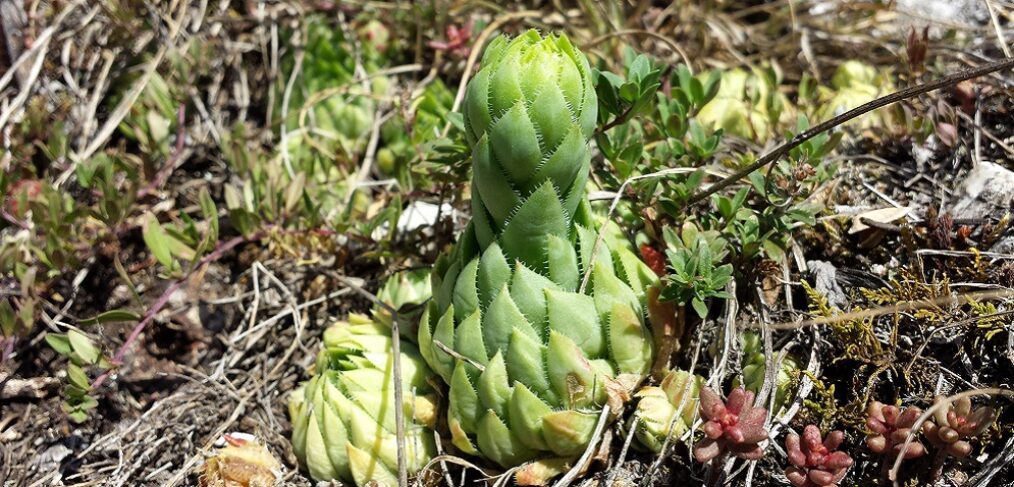
Species of the week #115 – Rolling hen-and-chicks
The Rolling hen-and-chicks is a houseplant that goes by many names. However, there are not, as is usually the case, many regionally different names for a scientifically uniformly designated species, but it is the other way round: because botanists could not agree for a long time to which section of the houseleeks the rolling hen-and-chicks belonged, it had more than ten Latin names.
| Distibution status in Rhineland-Palatinate | extinct |
|
Remaining deposits
|
Swabian Alb, Franconian Switzerland |
|
Last sighting
|
currently |
| Habitat | Dry sandy grassland, dry, sunny rocks with a low humus layer |
| Threat | Succession |
The rolling hen-and-chiks is widespread in low mountain ranges, in the Southern Alps and in Eastern Europe. Its daughter rosettes develop in a circle on the mother rosette. When the connection between the daughter and mother rosette dries up, the daughter rosettes roll to their new location, where they then take root.
The Rolling hen-and-chicks flowers with bell-shaped, whitish-yellow to dull pale yellow flowers. Unfortunately, it is very lazy in flowering, which makes it very difficult to determine with certainty.
Besides the wild form in various subspecies, there is the common lady’s houseleek, a popular garden plant that is said to bring good luck if grown on the roof.
Too many nutrients in the soil lead to overgrowth of the low-competitive Rolling hen-and-chick on its remaining habitats. The extra vegetation shades out the plants, which then die. In Germany, therefore, the species can only be found in very sparse locations, e.g. in the Swabian Alb or Franconian Switzerland. In Austria, the species still grows on granite rocks in Mühlenviertel, but is also threatened with extinction here. Across Europe, there is a lack of data to assess the threat situation.
Political necessity:
- Reduction of nutrient inputs through air and water pollutants.
- Better control of direct and diffuse nutrient inputs into nature
- Implementation of the polluter pays principle
- More comprehensive data collection of endangered species in the EU
Click here for more exciting species of the week
Photo : By Stefan.lefnaer – Own work, CC BY-SA 4.0, https://commons.wikimedia.org/w/index.php?curid=35989413
